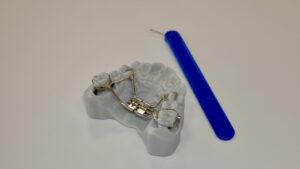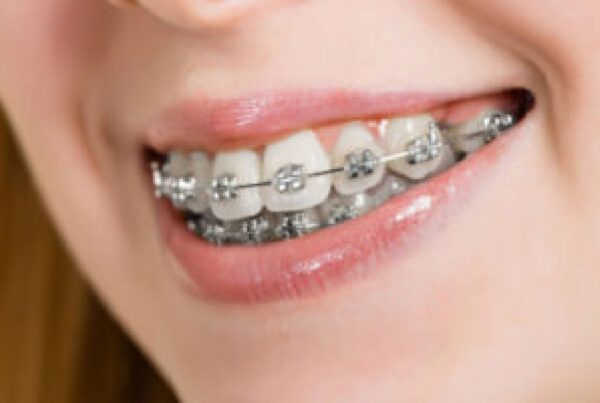Sometimes a child is born with or develops an upper jaw narrower than their lower jaw. Consequently, they may experience problems that your orthodontist can fix using a palatal expander.
What is a palatal expander?
Made of metal or acrylic, orthodontists use palatal expanders to widen the upper jaw in a process known as maxillary expansion. Typically used in children and teenagers, palatal expanders attach to the back teeth of the upper jaw.
“They (expanders) have a screw in the middle which the child, or their parent, turns at home anywhere from two times a day to once a week,” says Totara’s Specialist Orthodontist Danielle Hodgkinson.
Danielle explains that over time, tension moves the palatal bones apart to widen the jaw.
There are two main types of palatal expanders:
- Fixed: expanders are cemented to the teeth.
- Removable: expanders can be removed for cleaning and are usually used in milder cases.
The purpose of maxillary expansion
“Teeth are designed to bite in a certain way,” says Danielle. “If you have a narrow upper jaw, your upper teeth might sit inside the lower teeth and be more prone to tooth wear. A narrow upper jaw may also cause issues with chewing and your teeth may be difficult to clean”
Reasons why maxillary expansion may be necessary, including to:
- create more space to allow teeth to align correctly.
- fix situations where a narrow upper jaw causes the upper teeth to bite outside of the lower teeth.
- improve the bite and appearance of poorly aligned teeth
- create a more balanced facial structure.
Who are palatal expanders suitable for?
Danielle says that a patient should receive non-surgical expansion while young enough for the upper jaw to be made of two bones joined in the middle.
“Somewhere during the stage of puberty – we can’t quite pinpoint when – the two bones fuse to form one bone that’s unable to be expanded further,” she says.
Ideally, explains Danielle, a child with a narrow jaw or crossbite should see an orthodontist at around the age of seven or eight.
“We decide when to treat them at that point. At around fifteen, it’s getting a bit too late, so we do want to see the patient early. After puberty, once the two halves of the upper jaw have joined together, palatal expansion requires surgery to free up this fused area so that two halves can be moved apart with expansion,” she says.
How does wearing a palatal expander feel?
Like with braces, wearing a palatal expander can feel a little strange at first.
“It’s a tight feeling, a lot of pressure, but not necessarily pain,” says Danielle.
How long does expansion take?
A patient will usually wear a palatal expander for about six months, although the actual expansion is generally faster.
“With rapid expansion, expansion can be done within about two weeks, so it’s quite quick. But other times when we’re doing slower expansion, usually with a plate, that can take months to get to. But, once we’ve got where we need to be (the palate is expanded), we need to leave the expander in for at least six months to let everything settle. Expansion is something that can relapse,” says Danielle.
More questions?
Did we answer all your questions? If you’d like more information, please get in touch. Oh, and if you enjoyed this post, please share.



